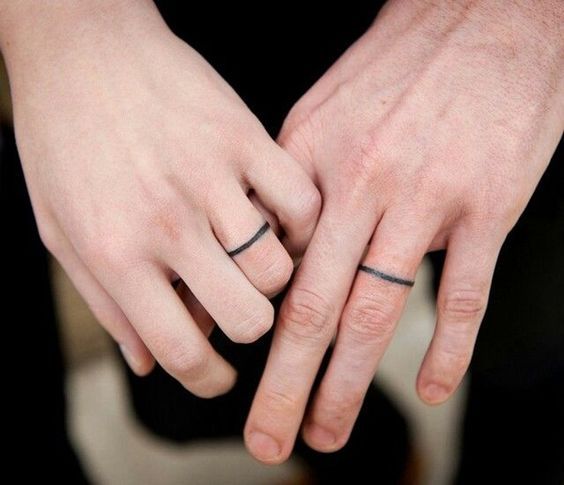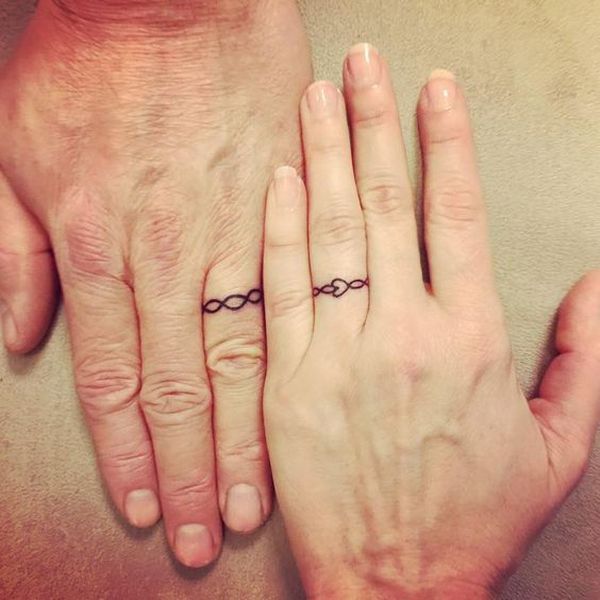Celebrating an engagement with a diamond ring is something that only came in style within the past century or so, but the “fashion trend” shows no sign of stopping.
For couples who want to be edgy and different, they might instead opt for a different gemstone rather than mainstream diamond.
And then there are those who opt for finger piercings.

Source: piercings_by_billie/Instagram
They’re now all over Instagram. Love it or hate it, there’s no denying that a finger piercing is certainly an eye-catching way of announcing your engagement to the world.

Source: eventsbymari/Instagram
What are these?!
How does one pierce a finger, you ask? They’re actually called dermal or microdermal piercings, which means it’s simply a stud anchored underneath the skin without having an exit point, unlike traditional ear piercings.
Dermal or microdermal piercings aren’t new, and can be done on any other part of the body. Some have chosen to get it done on their collarbone, their arms, or even parts of their face.

Source: piercings_by_martine/Instagram
Piercing a diamond stud on the ring finger, traditionally the finger on which an engagement ring is worn, is unsurprisingly the piercing that has gotten all the hype.
Insider spoke to some piercers, and both have stood behind the aesthetic of a diamond dermal piercing, callin it “unique” and a “fun, modern way to express your love.”
There are risks involved

Source: quan_shineon/Instagram
Other experts have, however, expressed their concern over this growing trend. Canada’s Global News spoke to Dr. Lisa Kellett, a dermatologist and medical director of her own dermatology clinic, who warned against the risks of a finger dermal piercing.

“There are digital nerves and arteries that supply the finger, and if you were to pierce through them it would be a big problem,” says Dr. Kellett. “If you catch your finger on something, it could cause tearing or scarring, and scarring, in particular, can cause significant problems in range of motion and function of the finger.”

Source: saruh.com/Instagram
The controversial piercing is also frowned upon even by piercers in the industry. Whitney Lapointe, a body piercer from Toronto, tells Global News that she refuses to do finger dermal piercings on her clients. “It’s highly infectious because you’re always touching things with your hands, and it’s very likely that you’ll get it caught on things.”

Source: patrysiekk/Instagram
Furthermore, as most body piercers can attest, dermal piercings always run the risk of getting rejected or migrated by the body. For this reason, dermal and microdermal piercings are considered “semi-permanent”, says Ireland-based piercer Ceri on Instagram, lasting from a couple of months to a few years if you have it done in a low-movement area.
The chance of this happening with finger dermal piercings are even higher, according to Lapointe, because of how much most people would have to move their hands and fingers every day.
A safer alternative? Engagement tattoos
If you don’t really want to buy a ring, are now scared of engagement piercings, but still want something permanent to celebrate the commitment between you and your partner, consider engagement tattoos instead!

You won’t be able to get them in the traditional gold or silver, but you’ll never have to worry about losing it or having to change your ring size in the future.
If you’ve had tattoos done, you’d know that getting them done over bony areas can be more painful than areas with more fats and flesh underneath.

Your fingers are one of the boniest areas of your body with the least underlying tissues, so that’s one point you need to consider before you get permanently inked.
Would you do engagement piercings or tattoos, or stick with traditional engagement rings? Perhaps you don’t think an engagement needs any extra adornments to make it any sweeter. Let us know what you think in the comments down below!


